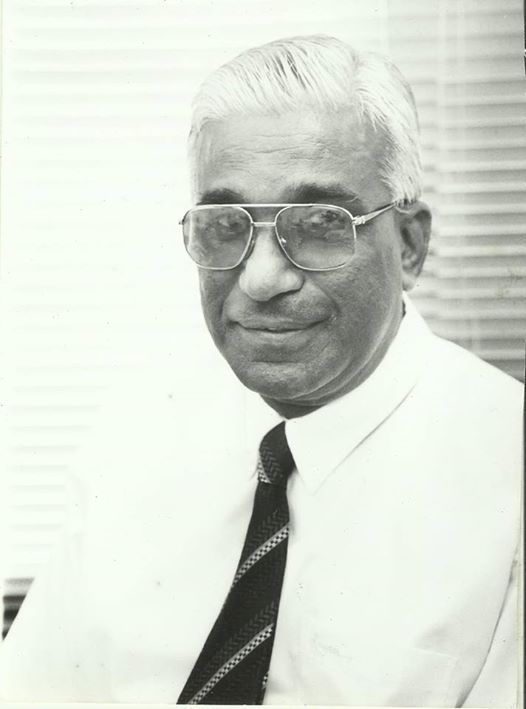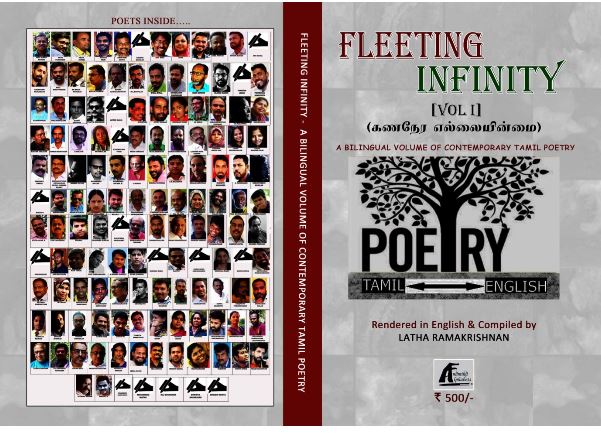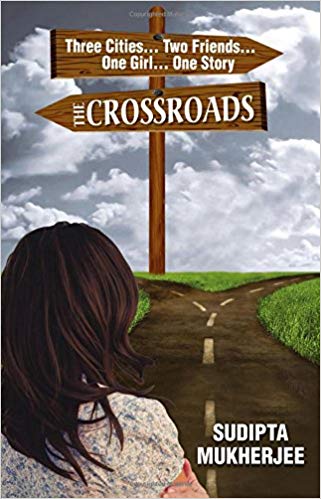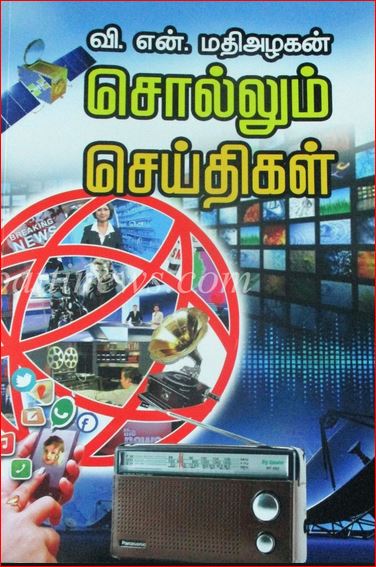 From the humble beginnings as an Operational Assistant (spinning discs and assisting in production of programmes) in the studios of Radio Ceylon, V N MathiAlagan gained practical and theoretical aspects of electronic broadcasting, step by step, and rose to the highest position as Deputy Director General of Broadcasting. He is a humble and pleasant man with dedication to his chosen field with immense talents and shone over the airways as the first Thamil newsreader over the first TV station in Lanka the ITN, and later the Rupavahini and proving himself as an efficient administrator in radio broadcasting too.
From the humble beginnings as an Operational Assistant (spinning discs and assisting in production of programmes) in the studios of Radio Ceylon, V N MathiAlagan gained practical and theoretical aspects of electronic broadcasting, step by step, and rose to the highest position as Deputy Director General of Broadcasting. He is a humble and pleasant man with dedication to his chosen field with immense talents and shone over the airways as the first Thamil newsreader over the first TV station in Lanka the ITN, and later the Rupavahini and proving himself as an efficient administrator in radio broadcasting too.
At the beginning of the present century he emigrated to Canada and presently work for the TVI Channel (Tamil Vision Inc.) as a Senior Broadcaster.
He was in Lanka last week to launch his worthwhile book of 150 pages titled “V N. MathiAlagan- Sollum Seithigal” (meaning the NEWS (he) SAYS)
The book is priced at Rs 1000 and printed by Kaanthalaham in Chennai.
SriLankan Radio (then called Radio Ceylon and later SLBC) was and is very popular broadcasting medium in South Asia for its friendliness shown by broadcasters in different tongues-English, Thamil, Sinhala, Hindi, Malayaalam, Telugu and Kannada.
But now, sad to say, with the number of private radio TV stations coming up, the focus is on cheap entertainment and catering mostly to the not so culturally inclined younger people. The electronic media is e flooded with broadcasters descending to lower standards, thereby insulting the majority of listeners and viewers who expect information and cultivated cultural items. The audience expect that the broadcasters should play a role model to the listening and viewing public. The accepted standards of using the medium of language deteriorated, and young people not properly understanding the nature of radio/tv broadcasting enter the field using clichés and inappropriate ‘ad lib bing’, lowered the standards of speech over these channels.
But not all broadcasters are to be blamed for the misuse of broadcasting etiquette.
It is at this point, that this book in Thamil serves the good purpose of educating the etiquette in broadcasting, particularly in radio / tv journalism and the quintessence of good broadcasting.
The author acknowledges the pioneer TV personalities, the late Thevis Guruge, and Sharmini Boyle by using their colour photographs in the back of the front cover and dedicates the book to his wife, who is the woman behind his success. There are 15 chapters plus comments by others in the form of introductions and forewords and wishes.
In his well-written pieces in clear language, he primarily stresses on the language of the spoken word and news presentation. Simple language is rightly recommended by him. He also mentions the collective responsibility in gathering news and rendering them. He also writes about the current methods of News communication in the electronic media. He cautions of how correct pronunciation matters, behind the news, perfect translation into native languages, newsroom studios among other things
Continue Reading →











 From the humble beginnings as an Operational Assistant (spinning discs and assisting in production of programmes) in the studios of Radio Ceylon, V N MathiAlagan gained practical and theoretical aspects of electronic broadcasting, step by step, and rose to the highest position as Deputy Director General of Broadcasting. He is a humble and pleasant man with dedication to his chosen field with immense talents and shone over the airways as the first Thamil newsreader over the first TV station in Lanka the ITN, and later the Rupavahini and proving himself as an efficient administrator in radio broadcasting too.
From the humble beginnings as an Operational Assistant (spinning discs and assisting in production of programmes) in the studios of Radio Ceylon, V N MathiAlagan gained practical and theoretical aspects of electronic broadcasting, step by step, and rose to the highest position as Deputy Director General of Broadcasting. He is a humble and pleasant man with dedication to his chosen field with immense talents and shone over the airways as the first Thamil newsreader over the first TV station in Lanka the ITN, and later the Rupavahini and proving himself as an efficient administrator in radio broadcasting too.

 [ – – எழுத்தாளர் அ.ந.கந்தசாமியை அறிஞர் அ.ந.கந்தசாமி என்று அழைப்பர். இலக்கியத்தின் பல துறைகளிலும் தன் ஆளுமையினைப் பதித்தவர் அ.ந.க. ஆங்கிலத்திலும் மிகுந்த புலமை மிக்கவர். அவரது பன்முகப் புலமை காரணமாகவே அவர் அறிஞர் அ.ந.கந்தசாமி என்று அழைக்கப்பட்டார். அதனால்தான் கலாநிதி க.கைலாசபதி அவர்கள் தனது ‘ஒப்பியல் இலக்கணம்’ நூலினை அ.ந.க.வுக்குச் சமர்ப்பணம் செய்தார். ‘அ.ந.க. என்ற ஆய்வறிவாளர்’ என்னும் ‘தினக்குரலில்’ வெளியான இச்சிறு கட்டுரையில் புகழ்பெற்ற கலை, இலக்கியத்திறனாய்வாளரான கே.எஸ்.சிவகுமாரன் அவர்கள் ‘அ.ந.க ஓர் அறிஞரே’ என்று ஆணித்தரமாகக் கூறுகின்றார். அந்த வகையில் முக்கியத்துவம் வாய்ந்த இக்கட்டுரை இன்னுமொரு வகையிலும் முக்கியத்துவம் வாய்ந்தது. கே.எஸ்.சிவகுமாரன் அவர்கள் அ.நக.வுடனான தனது அனுபவங்களையும் பதிவு செய்திருக்கின்றார் என்பதுதான் அம்முக்கியத்துக்குக் காரணம். – . – பதிவுகள் -]
[ – – எழுத்தாளர் அ.ந.கந்தசாமியை அறிஞர் அ.ந.கந்தசாமி என்று அழைப்பர். இலக்கியத்தின் பல துறைகளிலும் தன் ஆளுமையினைப் பதித்தவர் அ.ந.க. ஆங்கிலத்திலும் மிகுந்த புலமை மிக்கவர். அவரது பன்முகப் புலமை காரணமாகவே அவர் அறிஞர் அ.ந.கந்தசாமி என்று அழைக்கப்பட்டார். அதனால்தான் கலாநிதி க.கைலாசபதி அவர்கள் தனது ‘ஒப்பியல் இலக்கணம்’ நூலினை அ.ந.க.வுக்குச் சமர்ப்பணம் செய்தார். ‘அ.ந.க. என்ற ஆய்வறிவாளர்’ என்னும் ‘தினக்குரலில்’ வெளியான இச்சிறு கட்டுரையில் புகழ்பெற்ற கலை, இலக்கியத்திறனாய்வாளரான கே.எஸ்.சிவகுமாரன் அவர்கள் ‘அ.ந.க ஓர் அறிஞரே’ என்று ஆணித்தரமாகக் கூறுகின்றார். அந்த வகையில் முக்கியத்துவம் வாய்ந்த இக்கட்டுரை இன்னுமொரு வகையிலும் முக்கியத்துவம் வாய்ந்தது. கே.எஸ்.சிவகுமாரன் அவர்கள் அ.நக.வுடனான தனது அனுபவங்களையும் பதிவு செய்திருக்கின்றார் என்பதுதான் அம்முக்கியத்துக்குக் காரணம். – . – பதிவுகள் -]  A 25 page slim volume of 24 poems published by Mathusooothanan Jeyakrishnan and A L Aazath printed at A J Printers Station Road, Dehiwela is prized at Rs, 250/- The author is a senior lecturer attached to the Department of English Language teaching of the University of Colombo. As the title says she writes about the poems of soil. What soil is that? Obviously, as the Foreword writer says- “Balayogini’s poems will be read with great interest as the outside world is gaining access to North Sri Lanka after the recent cessation of war. The environmental ruins and human toll will probably give people an idea of the experiences in this land.”
A 25 page slim volume of 24 poems published by Mathusooothanan Jeyakrishnan and A L Aazath printed at A J Printers Station Road, Dehiwela is prized at Rs, 250/- The author is a senior lecturer attached to the Department of English Language teaching of the University of Colombo. As the title says she writes about the poems of soil. What soil is that? Obviously, as the Foreword writer says- “Balayogini’s poems will be read with great interest as the outside world is gaining access to North Sri Lanka after the recent cessation of war. The environmental ruins and human toll will probably give people an idea of the experiences in this land.”